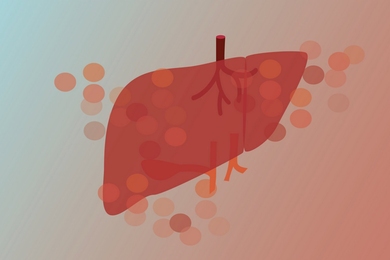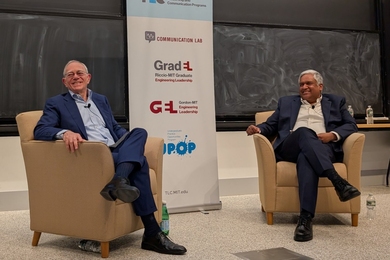MIT chemical engineers have devised a cheaper way to synthesize a key biofuel component, which could make its industrial production much more cost-effective.
The compound, known as gamma-valerolactone (GVL), is attractive because of its versatility, says Yuriy Román, an assistant professor of chemical engineering and leader of the research team. It has more energy than ethanol and could be used on its own or as an additive to other fuels. GVL could also be useful as a “green” solvent or a building block for creating renewable polymers from sustainable materials.
The traditional process for converting plant material to GVL requires catalysts made from precious metals and must be done at very high pressures of hydrogen gas, which makes the process cost-prohibitive. The new MIT production method, described in the June 11 issue of the journal Angewandte Chemie, eliminates both of those obstacles.
“People recognize that GVL is a very interesting molecule derived from biomass, but the type of processing now used doesn’t allow the manufacturing process to be scaled up. It’s done at a lab scale, but not industrial scale,” Román says.
Román and his colleagues are now working on an economic analysis of the savings the new process might generate, and are working to apply the principles of their new synthesis to the production of similar fuels or fuel precursors. Lead authors of the new paper are Linh Bui, who recently received an SB in chemical engineering from MIT, and Helen Luo, a graduate student in chemical engineering.
An expensive synthesis
To create GVL from plant material, it is necessary to start with cellulose or hemicellulose (a less-stable relative of cellulose), which together make up most plant biomass.
Using the traditional GVL manufacturing method, cellulose and hemicellulose are converted into levulinic acid, which has a chain of five carbon atoms. That chain is then closed into a ring by adding hydrogen atoms in a process called hydrogenation.
That hydrogenation step is where the manufacturing process becomes cost-prohibitive. To add hydrogen atoms to levulinic acid, a precious metal catalyst, usually palladium or ruthenium, is needed. Also, the source of hydrogen atoms is hydrogen gas, which is not very soluble in water. To get enough hydrogen to dissolve in the water where the reaction takes place, the entire system must be exposed to very high pressure, which requires expensive equipment.
Other chemists have tried to get around these obstacles by using less-valuable metals such as copper as the catalyst, but those are quickly deactivated in water or don’t perform the reaction as efficiently as the precious metal catalysts. Chemists are also seeking new sources of hydrogen; one alternative is formic acid, which releases hydrogen when it dissolves in water. This seems to work well, Román says, but the reaction still requires a precious metal catalyst and relatively harsh conditions.
A new cascade
The MIT team took a new approach, using a series of cascading reactions slightly different from the traditional pathway. Instead of converting hemicellulose directly to levulinic acid, they first convert it to furfural, a molecule that contains a five-member ring. Starting with furfural, the researchers then launch a cascade in which they open up the ring, add hydrogen atoms, then close it into a new ring — GVL.
The catalyst for this series of reactions is a zeolite — a porous silicate mineral containing zirconium and aluminum, both abundant metals. The source for the hydrogen atoms is an alcohol called 2-butanol, which can be obtained easily from renewable biomass sources. The entire process takes place at a relatively low temperature (120 degrees Celsius) and does not require hydrogen gas, so the capital costs for the necessary equipment are lower than they would be using the traditional process, Román says.
The new reaction generates GVL in yields exceeding 70 percent from biomass, comparable to the yield of the traditional manufacture of GVL, but the researchers are now working on tweaking the reaction to further improve its efficiency. In particular, they are studying how different solvents and the acidity of the catalyst affect the reaction. Tuning the catalyst’s acidity can reduce byproducts, Román says.
The researchers are also working on coupling their new synthesis to the synthesis of furfural from biomass, so the entire production process can occur in a single cascade of reactions controlled by the same catalyst.
Raul Lobo, a professor of chemical engineering at the University of Delaware, says the research is an important advance in applying this type of catalyst to sustainable chemistry. “I hope this opens the door to multiple opportunities of applying the same chemistry to other biomass-derived molecules, increasing the likelihood that biomass will be used as an important and renewable source of carbon in the chemical industry in the 21st century,” says Lobo, who was not part of the research team.
The research was funded by the U.S. Department of Energy.
Chemical engineers’ new synthesis could make biofuel more appealing for mass production.
Publication Date:






